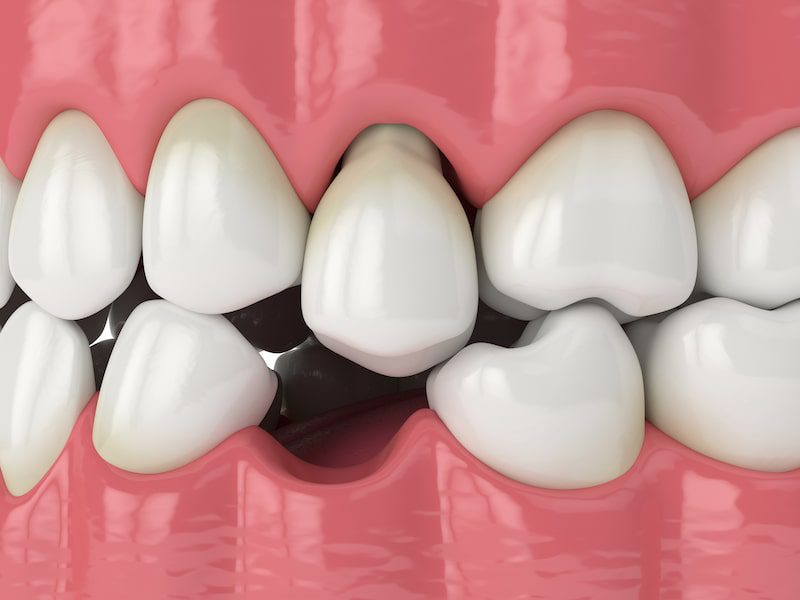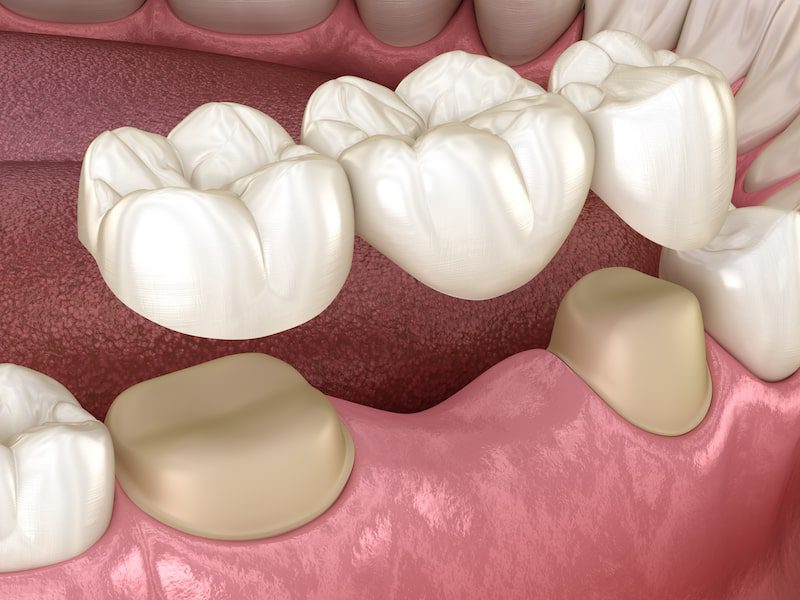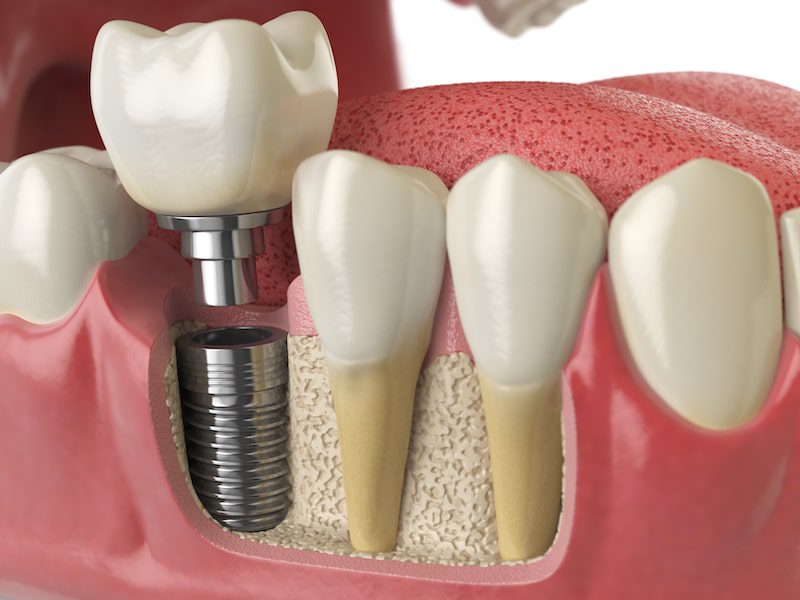Losing one or more teeth can be troubling, to say the least, and unless the loss was caused by an injury, it might indicate severe gum disease and the deterioration of underlying bone.
If dental trauma is to blame for your lost tooth, an emergency visit to the dentist is strongly recommended to assess the gums and nearby teeth.

Depending on your specific circumstances, the dentist may recommend one of two tooth replacement options:
- A fixed dental bridge
- A dental implant
Dental Bridges to Replace Missing Teeth
 A dental bridge consists of an artificial tooth (pontic) with crowns on each side that are attached to the healthy teeth adjacent to the missing tooth.
A dental bridge consists of an artificial tooth (pontic) with crowns on each side that are attached to the healthy teeth adjacent to the missing tooth.
A bridge can also replace two missing teeth next to each other with two pontics instead of one. This method replaces only the top part of the missing tooth and not the root.
The Problem With Fixed Dental Bridges
The main drawback of choosing a fixed dental bridge is that it only solves half the problem. When the tooth root is not replaced, the underlying bone is deprived of the regular stimulation needed to stay healthy.
A missing tooth root is the primary cause of resorption, which causes the bone to lose density and shrink. Resorption can lead to further tooth loss and a thinning of the jawbone and facial contours.
You may have seen this result in the faces and chins of long-time denture wearers with a prematurely aged appearance.
Dental Implants for Comprehensive and Long-Lasting Tooth Replacement
 Dental implants restore the whole tooth structure, including the root and crown. It involves a more extensive procedure than a dental bridge but offers superior benefits. These include:
Dental implants restore the whole tooth structure, including the root and crown. It involves a more extensive procedure than a dental bridge but offers superior benefits. These include:
- Providing stimulation for the underlying bone to prevent resorption.
- Looking and feeling like your own natural tooth.
- Providing reliable stability so you can eat with confidence.
- Long-lasting with proper care.
- Support three or four missing teeth in a row (with two implants).
How Do Dental Implants Work?
The procedures involved in receiving dental implants and the length of time they take depend on the current condition of your gums and underlying bone.
Often, tooth loss is due to periodontitis (advanced gum disease), and the process of resorption has already begun.
In these cases, before the implants can be inserted into the jawbone, the patient will have to undergo bone grafting, and the gums will need regenerative therapy. Once the jaw and soft tissue are strong enough, titanium posts are screwed into the jaw bone to replace missing tooth roots.
It may take several weeks for the posts to fuse with the bone, after which a crown (color-matched to existing teeth) is attached to the implant. The result is a permanent restoration that feels and functions like your natural teeth.
When Gum Disease Is to Blame for Tooth Loss
When your tooth has loosened over time and required extraction (if it didn’t fall out on its own), or you have multiple loose teeth in the absence of trauma, advanced gum disease is most likely the cause.
The dentist will examine your remaining teeth and determine if they are healthy enough to support a bridge to replace your lost tooth. Chances are you will need treatment to fortify your teeth, gums, and jawbone before a bridge or dental implant can be placed.
Dental implants are strongly recommended in these cases to help maintain bone density after treatment, which will probably include bone and soft tissue grafts.
Dental Implants in Beverly Hills
Dr. Kevin Sands is a world-renowned celebrity dentist offering high-quality dental implants at his upscale Beverly Hills practice and is currently accepting new patients.If you have any missing or loose teeth, don’t wait! Call Dr. Sands today to schedule your appointment, or scroll down to contact us online.